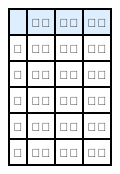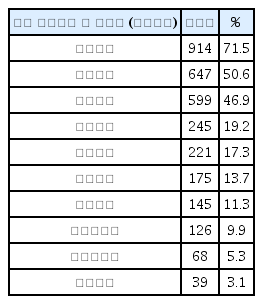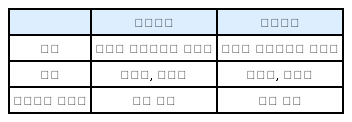References
1. Han CH, Park JE, Ahn SW, Choi SM. A Survey about the recognition regarding the Korean acupuncture method and research direction. The Journal of Korean Medical history 2005;18(1):89–101.
2. Yoo JH, Kim YY, Park KH, Jang ES, Lee SW. A Study on the Sasang Constitutional application of Clinical Acupuncture. Korean Journal of Oriental Medicine 2010;16(3):15–22.
3. Han CH, Shin MS, Park SH, Choi SM. Research trends of the Saam’s Acupuncture Method in Korea. Korean Journal of Oriental Medicine 2006;12(2):15–30.
4. Lee JH, Kim HJ, Shin YS, Park YJ, Park YB. Review on Eight Constitution Medicine. The Journal of Korean Medicine 2012;33(1):90–106.
5. Gam CW, Park DI. Study on Hwa-acupuncture Theory. Journal of Physiology & Pathology in Korean Medicine 2005;19(2):363–9.
6. Sim SH, Kam CW, Park DI, Byun MK, Kim SH, Baek SI. Study on Hwa-acupuncture Theory. Journal of Physiology & Pathology in Korean Medicine 2008;22(3):1119–24.
7. Lee CW. 2nd rev edth ed. Intermediate Chongtong acupuncture therapy Gangwon Province: Chongtong Publishing Co; 2013. p. 28–9.
p. 51–2.
8. Park JY, Lee SH, Kim SY, Park HJ. Literature Review and Network Analysis on the Pain Disease Approach of Saam Acupuncture Method. Korean Journal of Acupuncture 2017;34(2):88–99.
9. Oh JH, Kim NI. A Study on the Acupuncture Methods of Joseon Dynasty Using Five Viscera Diagnosis. Korea Journal of Oriental Medicine 2010;16(2):1–31.
10. Meridians & Acupoints Compilation Committee of Korean medical Colleges. 7th rev. ed.th ed. Principles of Meridians & Acupoints; A Guidebook for College Students Daejeon: JongRyeoNaMu Publishing Co.; 2015. 51p. 308–9.
p. 361–5.
11. Young WC. Practical Five transport points’ demonstration(實用 五輸穴發揮) Gyeonggi Province: FishWood; 2014. p. 23.
12. Kim SH. Sun Ho Miraculous Pivot(Volume 1) Daejeon: Jumin Publishing Co.; 2003. p. 14.
13. Kim SH. 2nd rev edth ed. Genuine Meaning of the Classic of Difficult Issues(改訂版 懸吐完譯 難經本義) Daejeon: Jumin Publishing Co; 2016. p. 304–7.
p. 319.
14. Yamada K. How Chinese Medicine started Seoul: ScienceBooks; 2012. p. 132.
15. Yong BK. The Concept of Huangdi’s Internal Classic Seoul: NonJang Publishing Co.; 2010. p. 107.
16. Huang LX. The abstract of academic history of Chinese Acupuncture & Moxibustion(中國 針灸學術史大綱) Seoul: Bubin Publishing Co.; 2005. 9p. 243–6.
p. 372–5.
p. 404p. 565p. 895–8.
17. Liao MC, Kang XW, Liang WX. History of I Ching Philosophies Seoul: Yemoonseowon; 1994. p. 47.
18. Kye KY, Kim BS. Principles and the Meaning of the Establishment of Meridian and Collateral Theory Based on Symbolic Mathematical Study. Journal of Physiology & Pathology In Korean Medicine 2018;32(4):197–210.
19. Kye KY, Kim BS. A Study on Consideration of the Concept and the Directions in Further Research of Meridian Points(經穴) Based on Symbloic Mathematical Study(象數學). The Journal of Korean Medicine 2020;41(2):9–22.
20. Shin DH, Kim JH, Cho MR. A Clinical Study on the Formation of Ohaeng-Acupuncture. The Journal of Korean Acupuncture & Moxibustion Society 2002;19(4):124–31.
21. Committee of textbook compilation in Korean Acupuncture & Moxibustion medicine Society. 2nd rev edth ed. The Acupuncture and Moxibustion 2 Gyeonggi Province: Jibmundang; 2008. p. 438–441.
22. Choi SM. Discovery and triangular position of Korean acupuncture and moxibustion treatment techniques. Korea Institute of Oriental Medicine Research Report 2005;:1–118.
23. Kim DH, Kim JH. The Literary Study on The Written Date of and The Background of Sa-Ahm’s 5 Element Acupuncture Method. Journal of Oriental Medical Classics 1993;7(0):113–272.
24. Oh JH, Kim NI, Cha WS. The Originality of Acupuncture in Chosun Dynasty found in introduction to Medicine. Korea Journal of Oriental Medicine 2009;15(1):55–62.
25. Kim DH. Pictorial and historical researched Sa-am acupuncture therapy(圖解校勘 舍岩道人 鍼法) Busan: Sogang Publishing Co; 2008. 7p. 18.
26. Lee BH, Lee SN, Kim DJ, Kim JW, Lim SC, Jung TY, et al. A study on the Fixed- and Transformed-pattern of Saam Acupuncture Treatment. The Journal of Korean Acupuncture & Moxibustion Society 2008;25(5):17–25.
27. Oh JH, Kim NI, Cha WS. A Study on the Formation Process of Saam Acupuncture Method. Korean Journal of Oriental Medicine 2009;15(2):33–7.
28. Lee BH, Kwon KB, Park C, Jo CR, Ryu DG. Study on Principle of the Theory of Eight Constitutional Medicine. Journal of Physiology & Pathology in Korean Medicine 2009;23(4):789–98.
29. Jung IG, Kang SK, Kim CH. A Comparative Study on Acupuncture Using Five Su points (五輸穴). The Journal of Korean Acupuncture & Moxibustion Society 2001;18(2):186–99.
30. Kim JH, Cho MR. A Comparative Study on Sa-Am’s Ohaeng-acupuncture and Liuqi-acupuncture. The Journal of Korean Acupuncture & Moxibustion Society 2003;20(1):61–73.
31. Lee JM, Cho MR, Chae WS. The Study on Ohaeng-acupuncture which used the “難經75難”. The Journal of Korean Acupuncture & Moxibustion Society 2001;18(2):123–35.
32. Han DS. Principle of Cosmic change Seoul: Daewon Publishing Co; 2003. p. 146–152.
33. Kim MH, Kim BS. Study on the Concept and Its Structure of Visceral System in Current Traditional Korean Medicine. Journal of Physiology & Pathology In Korean Medicine 2017;31(6):305–312.
34. Kye KY, Kim BS. A Study on Methods of Acupuncture Points Combination and Hierarchy Concept of Acupuncture Prescription(鍼 處方) in Korean Medicine(韓醫學). The Journal of Korean Medicine 2020;41(3):9–21.








